Stocks are versatile concentrated water solutions used in cooking and range from vegetable to shrimp, fish and various meat stocks. The meat stock is a water extract of meat and bones that is used to cook a final dish. This system was originally developed by French chefs and at the time was considered to be fundamental in all restaurant cooking. With the advancement and ease of using prepackaged sauces and stocks today, it became pretty much a forgotten art.
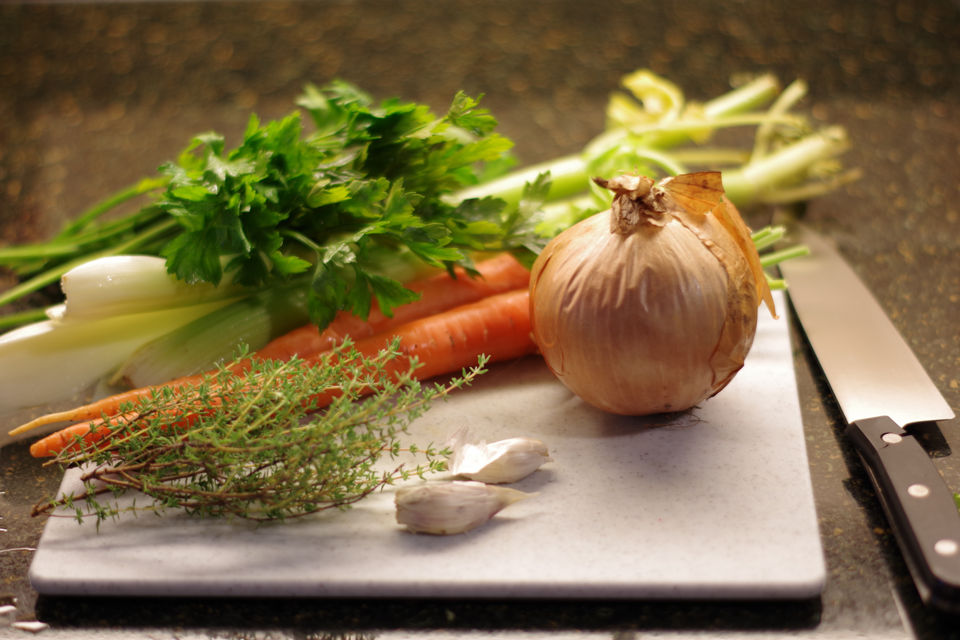

At the time of my early venturing in the art of cooking I remember I did not give much thought and value to function of stocks in cooking. I thought that stocks are “nice to have” and that water should make a reasonable substitute. The silliest moment and perhaps an eye opener came when out of all dishes, I substituted a beef stock with water when making a French Onion Soup. I am not sure what I was thinking, but somehow I anticipated that deeply caramelized onions were sufficient to give the soup most of its recognizable flavor. I will just say that the whole dish ended up being thrown out. No amount of spices, salt, cheese or whatever else could make it edible, much less taste anywhere near as deeply flavored French Onion Soup.
Since then I never again used anything but stock when recipe called for it; lesson learned. Normally I make a couple of liters at the time, divide the concentrate into smaller containers and keep it in the freezer. Stocks that are most frequently used are beef and chicken stocks and I always have them on hand. All others are made as needed.
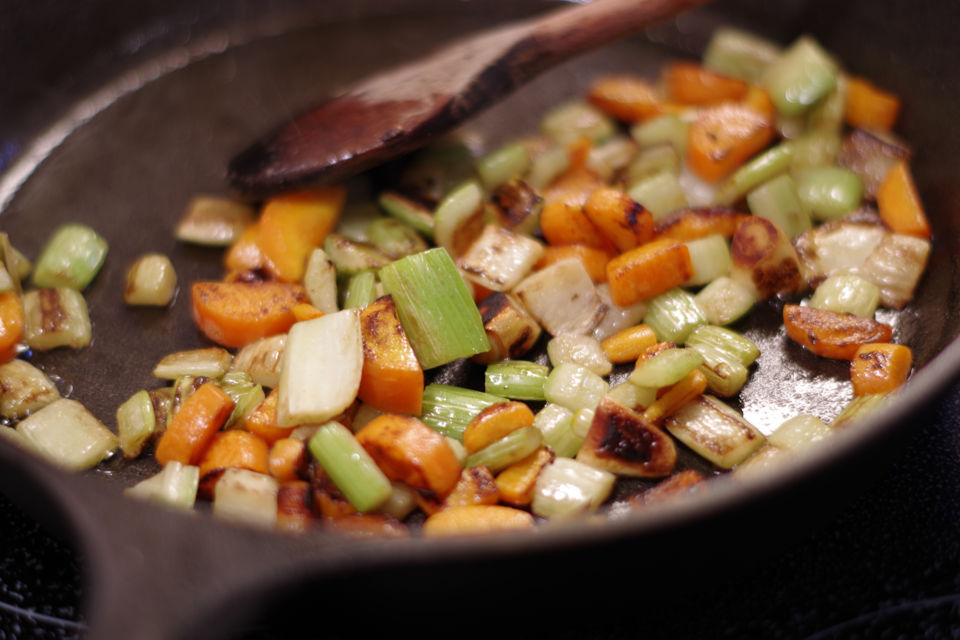
Today’s blog post is about “Best Quality Brown Beef Stock” whose origins are credited to Marie-Antoine Carême who was also known as a “chef of kings” and “king of chefs”; the father of high quality French cuisine. Best quality brown beef stock means exactly what it says; the best beef stock you can make. A stock’s impact on overall dish flavor is always noticeable but for some dishes more than the others. One dish where the quality of stock is vital is exactly French Onion Soup. In that regards, I consider my early days blunder as a fortunate accident.

This recipe takes about 2 1/2 days of cooking and produces about 1 liter of high quality brown beef stock. On the first day beef bones are roasted and vegetables browned, which is followed with 12 hour cooking on low heat. After straining, the thin stock is refrigerated overnight.
The next day beef fat is skimmed. Additional meat with bones as well as vegetables, are now browned in some of the skimmed beef fat. It is all added together to the warmed up thin stock and cooked an additional 4-5 hours before it is strained again. The stock is then again left in the refrigerator overnight.
On the following day, beef fat is skimmed again before the stock is warmed up and than cooked on a low simmer till it is reduced to the right consistency.
Although it appears as a very time consuming and daunting recipe, there is really little active work and most of the time is passive and long, slow cooking. If carefully planned around daily activities, it can be accomplished without much difficulty. The quality of stock at the end of process well justifies the effort.
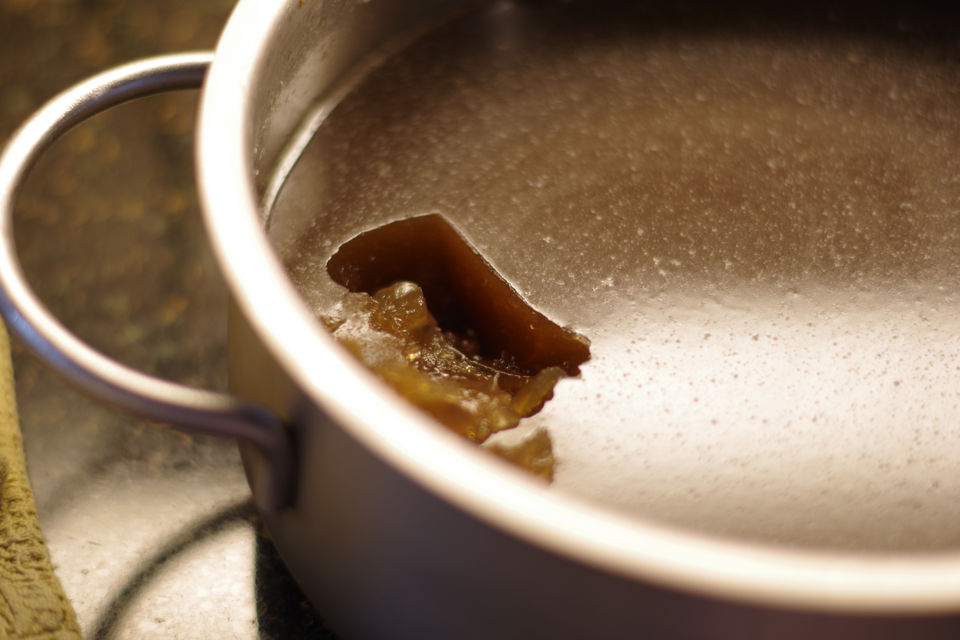
The recipe is adapted from the chef Greg Easter and his channel “CookinginRussia“.
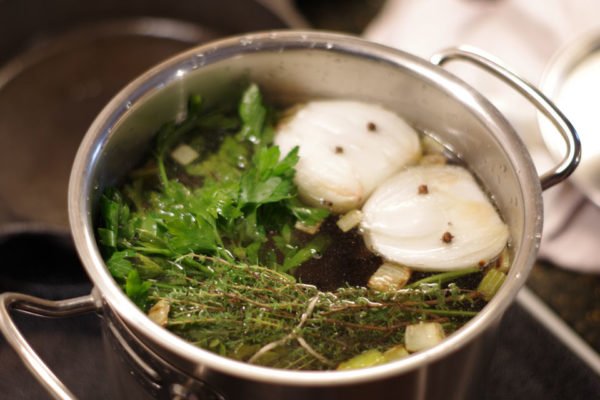
| Prep Time | 40 minutes |
| Cook Time | 60 minutes |
| Passive Time | 22-24 hours |
| Servings |
liter
|
- 2 kg beef bones
- 1 onion
- 4 cloves (spice)
- 2 garlic cloves roughly cut in half
- 2 carrots peeled and cut in approximately 12 mm (1/2") rounds
- 150 g celery (or celery root) coarsely chopped
- parsley, thyme, dill make bouquet of assorted herbs
- 2 tbsp unsalted butter
- 3 tbsp vermouth
- 2-3 tbsp stock fat collected after Day 1
- 1 kg beef shoulder bone in
- black pepper coarsely ground for meat rub
- garlic powder for meat rub
- 1 onion coarsely cut
- 2 carrots peeled and coarsely cut and halved
- 150 g celery coarsely cut
- 1.5 tsp dry thyme or couple of sprigs fresh thyme
- 2 bay leaves
Ingredients
Ingedients for Day 1
Ingredients for Day 2
|

|
- Spread the the bones on a metal baking tray, drizzle with vegetable oil.
- Roast at 225 ºC (430 ºF) for 45 minutes in conventional oven.

- Cut the onion in two, stud each half with 2 cloves.
- Over medium heat (5 out of 10), melt the butter in the medium size pan. Add to the pan and brown celery, carrots and garlic.
- Pour 3 liters of cold water into a 5 liter stock pot and add roasted bones. Pour off oil from the pan, put aside.
- Add onions halves spiked with the cloves, herb bouquet and browned carrots, celery and garlic.
- Heat up the pan you roasted the bones in, on a stove top. Deglaze it with vermouth and pour off in the stock pot.
- Over medium heat (5 out of 10), bring an uncovered stock pot to a simmer. During this time (it will take about 1 hour) skim off any scum forming on top.
- Partially cover stock pot (leave small crack, about 5 mm), reduce the heat and have the stock pot on a low simmer (gentle bubbling) for next 12 hours. It is very important to avoid vigorous boil!
- After 12 hours, turn the heat off and let the stock pot cool off for 30 minutes before removing and discarding the bones.
- Pour the stock through a sieve into a new pot with a lid, do not rub vegetables. Cool the pot off in a cold water bath in the kitchen sink. Add ice to the water bath. The goal is to cool the stock off to about 10-15 ºC (50-60 ºF) as quickly as possible and than put the lid on and refrigerate overnight. See recipe notes.
- Use a spoon to skim the stock fat, strain out any liquid. This is important as any liquid left in the fat will cause excessive splattering in the next step.
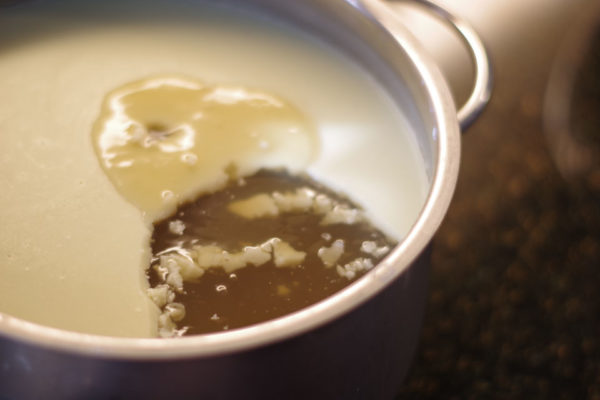
- Over medium heat (5 out of 10) warm up the stock, lid on the pot.
- Coarsely cut onion, carrots and celery, set aside.
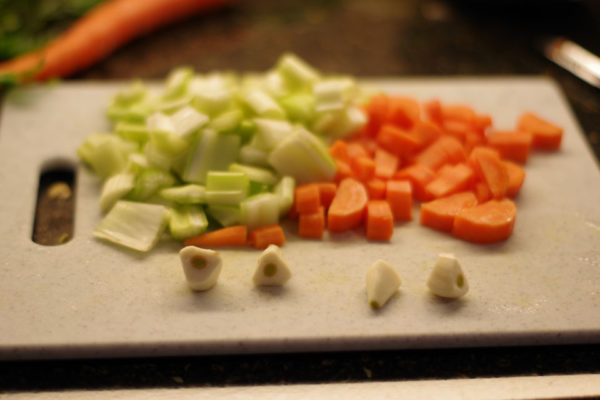
- Rub some coarsely ground paper on the beef shoulder cuts. Sprinkle both meat sides with garlic powder.
- Over medium high heat (7 out of 10) heat up the stock fat on a large skillet, brown the meat on both sides. Transfer the meat to the stock pot.
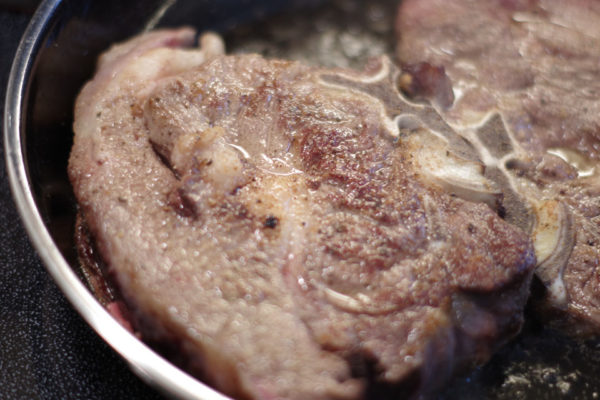
- Add the onions, carrots, and celery to the skillet. Cook just long enough until the vegetables release enough water that will allow scraping all the fond from the bottom. Transfer all the vegetables to the stock pot and also add thyme and bay leaves.
- Partially cover the stock pot and keep on low simmer for about an hour. Periodically turn the meat using a pair of tongs to make sure that part floating above the liquid gets cooked properly.
- Remove lid and increase the heat again maintaining low simmer as before. The heat needs to be increased because without a lid there is a larger heat loss. Keep turning the meat once in a while. Cook for another 1 hr and 45 minutes.
- Pull out the meat and set aside. Run the stock through a sieve, do not rub vegetables. Using a water bath with ice, quickly cool off the stock. Cover and leave in refrigerator overnight.
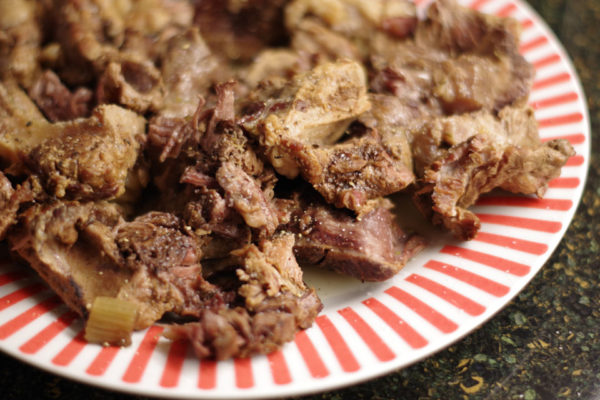
- Skim off any stock fat from the top. Transfer the stock to a sauce pan and bring to a low simmer. Cook without lid until the total mass of reduced or concentrated stock is about 1.2 kg. The easiest is to weigh the saucepan with stock inside, before the start of cooking. Check the weight periodically until the stock mass is reduced to 1.2 kg.
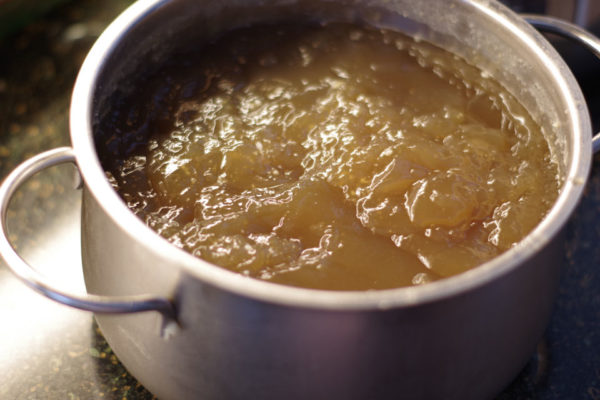
- Cool off the stock in a water bath with ice. Divide the stock in smaller cups and keep in the freezer.
- rapid stock cooling is required in ordered to extend the shelf life of stock. If all the stock will be used immediately then that is not much of a concern. However, if the stock is going to be stored for later use (frozen), then it is of utmost importance to cool it as quickly as possible to slow down bacterial growth. Bacteria grows rapidly at 40 ºC (104 ºF). The stock will start spoiling and possibly become toxic if not cooled down rapidly.
- you never add any salt to the stock.
- low simmer is the desired rate of slow cooking. Vigorous simmer or boiling would pulverize the vegetables and boil off most flavor molecules.
- the stock should be kept in the refrigerator for up to a week and in the freezer for up to 6 months.

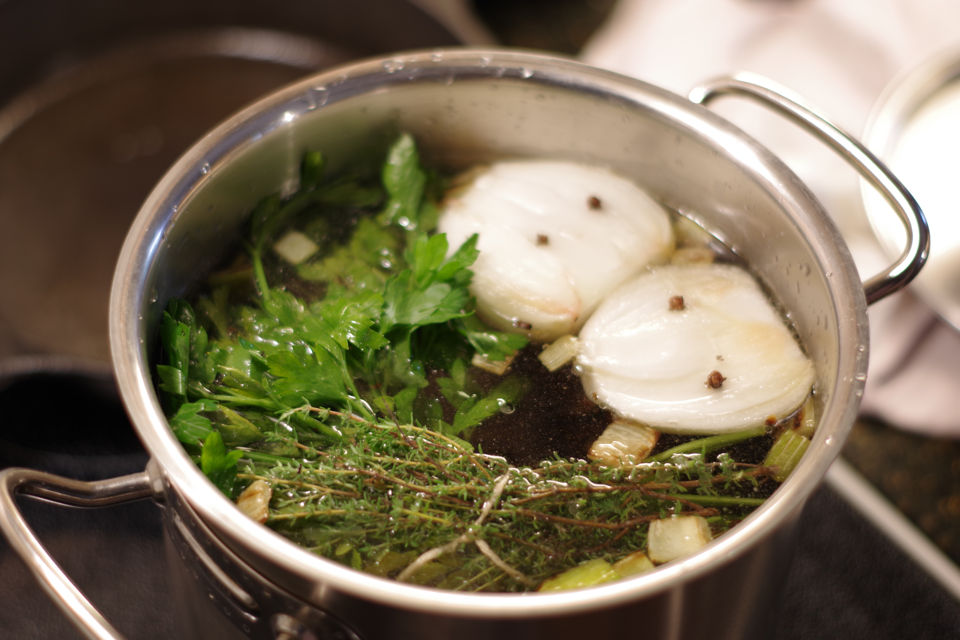
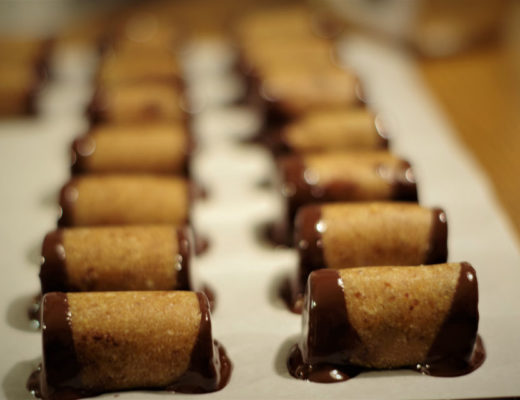
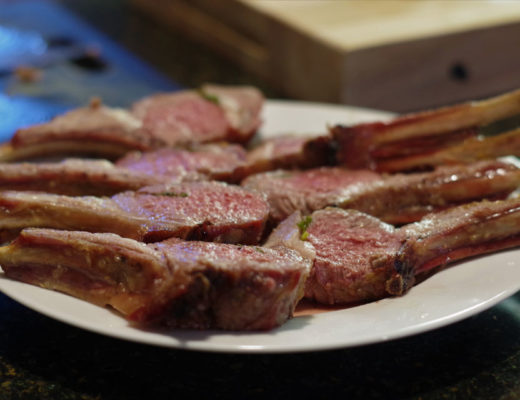
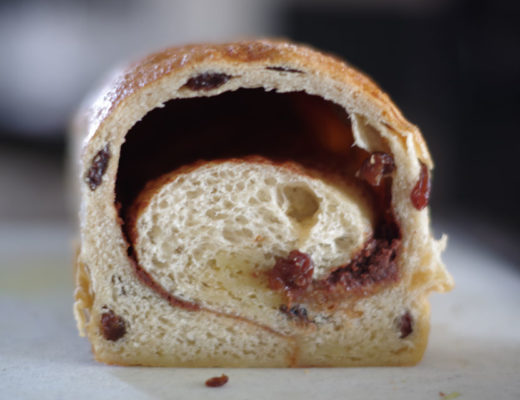
No Comments